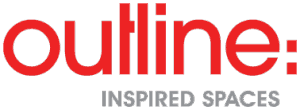Managing change in the workplace
Why managing change in the workplace is crucial to success: the science of reinventing space and relocating staff
Your business has grown. It has evolved. You know who you are, what you have to offer and how you want to do it – you know your Why. You need more space, or a better one. One that is truly fit for purpose – facilitates the most effective workflow, encourages collaboration and creative thinking (the cornerstone catchphrases of the Work of the Future). More than that, it reflects the values of the company, expresses the culture, gives your staff something to belong to. All this adds up to staff engagement and happiness, therefore longevity and productivity, therefore profitability. You find a space. You hire a designer. You book the movers. Sorted. What could go wrong?
Turns out, plenty can go wrong. If all your stakeholders do not share the same vision for the future of the business, and your staff are not consulted – who likely know more about the daily functioning of the workplace than you do at grass roots level – you can end up with the wrong space for your needs, the wrong brief for your designer, and a move that results in unhappy staff who resist change that they feel is imposed upon them. Productivity and happiness are compromised. Your people complain, or worse, leave.
Let’s back up the bus
Enter your Interior Design team and Change Manager. Engaged at the point you’re thinking you need to evolve your workplace, these services will find out if you do, and how you should. Ensuring all stakeholders are on the same page with their vision for the company, working alongside the staff to research workflow and habits (good and bad), an informed design brief is created that allows for future evolution of the business and incorporates modern work practices.
Wendy Jones, change management specialist who works alongside the Outline interior design team, explains. “We’ve moved away from ‘my office’ and ‘my space’, to ‘our space’, to ‘any space’, to ‘any place’. People need technology, people need people and people need spaces that bring them together. We have four work modes: we socialise, we learn, we collaborate, we focus – thus we’ve shifted away from the traditional workspace mindset.

The office as we once knew it has changed and now facilitates a new set of workers who are on a journey of increased collaboration and innovation. We need design that provides further opportunities to share ideas, achieve outcomes with more people and other teams – we need the opportunity to align our work with colleagues to create meaning.”
Taking all this into account, along with the specific needs of your business and staff, you now know what size and shape of space will meet your needs. In collaboration with your interior designers and change manager, you brief your real estate agent. They find you a truly fit-for-purpose space. Your design team space plan to ensure the requirements of the company are met in terms of process and efficiency. The brand, culture and values are expressed in the fit-out – graphics, colours, over-all look and feel.
Now you have a great new space, or a re-designed existing one. Staff will be happy, right? Not necessarily. Your staff need to feel listened to, to know that their needs are understood and met where possible. You may have answered the call to upgrade your workplace environment and methodology, but if staff are not engaged in the process they will bring bad habits with them to the new one, along with a barrel of resentment and resistance that does not help anyone, least of all you. It’s important that staff feel assured their positions and roles will be acknowledged within a new space; job-related transitions can have an emotional impact and hinder performance.
Change management ensures that not only the physical process of moving office is seamless, but the emotional journey for your people is equally as smooth. You want change that is positive, and sustainable. “Good change management guides your team through the emotional and physical move from one space and working style into another, with follow up to ensure it’s all working as it should, ” says Victoria Wilkes of Outline Design.
Ongoing communication is key
- Ask your employees what they need to make their individual workspace function
- When space planning alongside your interior design team, keep staff up-to-date with layout and additions – i.e. size of meeting spaces and breakout rooms, types of amenities.
- Offer support by helping staff evaluate their readiness to sustain new changes.
- Be clear on brand values, culture and behaviour. How can this be expressed? For example, which policies will be in place to support workplace flexibility? How will technologies support and work within your new design vision?
- Liaising beyond just the design process is critical too. If you are moving to a completely new part of town, discussing best travelling routes, eatery and parking options, provides a level of assurance and commitment to wellbeing.
“Keep on the people building process – don’t just do it for the move – set out to maintain a high level of communication. We have tools we use to facilitate discussion, gather and exchange information, ” says Victoria. “A move will be all the more positive and your space will work optimally because of its people focus. This is a vital part of the landscape of a successful and sustainable business.”
Download our moving office checklist here.
Change Management at Outline Design
Outline Design provides specialist consulting to ensure managers and staff have the best possible experience when moving or refurbishing their workplace. Using proven tools, processes and methodologies to facilitate discussion, gather and exchange information, we can help you realise a successful space that can support sustainable improvements in workflow, productivity, creativity and staff wellbeing. To find out more contact us.







